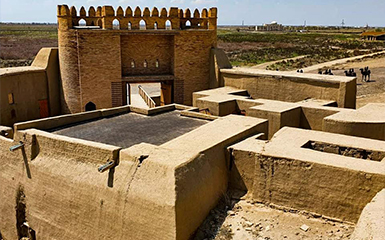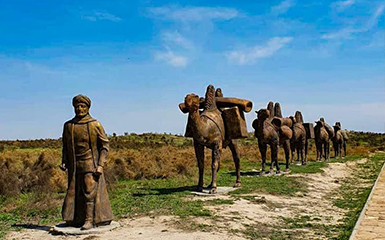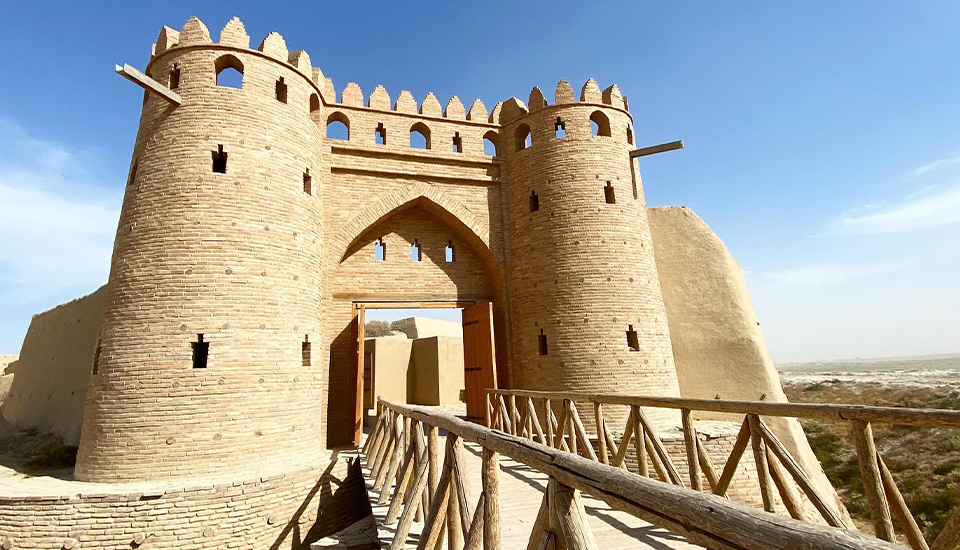Aisha-Bibi mausoleum
Aksu-Zhabagly
Aktau
Almaty
Altyn-Emel
Arystan Bab
Atyrau
Azret Sultan
Babaji Khatun
Bayanaul
Begazy necropolis
Beket-Ata Mosque
Almaty Lake
Lake Burabay
shakpak-ata-cave
Charyn Canyon
Hilvet mosque
Hodja Ahmad Yesevi
Holy Cave
Kaindy
Kapchagay
Karakhan mausoleum
Karkaraly
Kizhel Kensh
Kolsai Lakes
Korgalzhyn
Balkash lake
Lake Shaitankol
Jochi Khan
Karasai and Agyntai Batyr
Kozy Korpesh and Bayan Sulu
Mashkhur Zhussip Kopeyuly
Rabiga Sultan Begim
Kenty-Baba
Nomad Fortress
Nur-Sultan
Ruins of Otrar
Ruins of Sauran
Shopan-Ata
Shymbulak
Sultan-Epe
Tamgaly Gorge
Tamgaly-Tas
Alasha Khan
Torysh
Zhirensakal Peak
Otrar, before the Mongol invasion, one of the largest cities in Central Asia, now a settlement in the Otyrar district of the Turkestan region of Kazakhstan. It is located in the lower reaches of the Arys River at its confluence with the Syr Darya, 10 km west of the Timur railway station, next to the modern village of Talapty, 57 km south of the city of Turkestan, 120 km northwest of Shymkent.
The territory of the oasis is also adjacent to the ancient settlements Kuyruktobe, Kokmardan, Altyntobe, Mardan-Kuik. The heyday of the Otrar oasis falls on the period from the first to the 13th century AD. The city was inhabited until the beginning of the 19th century.
One of the mints of the Karakhanid dynasty was located in Otrar (Farab). At the beginning of the XIII century, the city of Otrar became part of the state of Khorezm. There is a possibility that Otrar was the centre of Farab, on the copper dirhams of the Khorezmshah Ala ad-Din Muhammad, made in Otrar in 1210-11, there is “Farab”, and in his minting in 1216-1218 - "Otrar", in front of which the word balad is placed (meaning "city", as well as "country, region").
In the two hundred thousandth Otrar, which grew up in the place where the Arys river merged with the Syr Darya, scientists, sages, skilled musicians, fortune tellers, jewelers settled. The city had a large madrasah, a bazaar, a smithy workshop, a gurt-khan (a place where they drank wine), a bathhouse, mosques, shops, and shops. During the Mongol invasion, Kair Khan, the maternal uncle of the Khorezmshah, ruled the city.
According to historical data, after the ambassadors of Genghis Khan were executed here, in 1219 the city was besieged by Mongol troops led by the sons of Genghis Khan. The siege lasted 6 months. Hunger and dissatisfaction with the refusal to negotiate with the Mongols began in the city, one night one of the residents of the city opened the gates to the Mongols. The Mongols who seized the city after that destroyed a significant part of the population, the rest were taken into slavery, and the city itself was burned and destroyed. Jochi personally executed a traitor named Karadzha, who opened the city gates.
Genghis Khan did not execute only Kair Khan, who fought to the last. Genghis Khan was struck by the courage and bravery of the warrior and considered that simply executing him was an unworthy death. Genghis Khan filled Kair Khan's eyes and mouth with silver.
Today Otrar is a pentagonal hill. The highest point of the hill is 18 m from the base. The total area is 200 hectares. A fence surrounds the city. Its north-eastern and eastern structures are well preserved. There are ditches dug around the main roof. The city had three gates. Archaeological excavations have made it possible to identify the cultural layers of the city, to analyse their time, to divide the construction sites into stages. The cultural floor of the city is 16 m. It consists of seven cultural floors.


